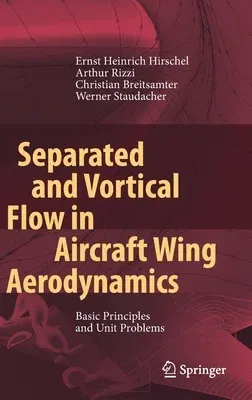Fluid mechanical aspects of separated and vortical flow in aircraft wing
aerodynamics are treated. The focus is on two wing classes: (1) large
aspect-ratio wings and (2) small aspect-ratio delta-type wings.
Aerodynamic design issues in general are not dealt with.
Discrete numerical simulation methods play a progressively larger role
in aircraft design and development. Accordingly, in the introduction to
the book the different mathematical models are considered, which
underlie the aerodynamic computation methods (panel methods, RANS and
scale-resolving methods). Special methods are the Euler methods, which
as rather inexpensive methods embrace compressibility effects and also
permit to describe lifting-wing flow.
The concept of the kinematically active and inactive vorticity content
of shear layers gives insight into many flow phenomena, but also, with
the second break of symmetry---the first one is due to the Kutta
condition---an explanation of lifting-wing flow fields. The prerequisite
is an extended definition of separation: "flow-off separation" at sharp
trailing edges of class (1) wings and at sharp leading edges of class
(2) wings. The vorticity-content concept, with a compatibility condition
for flow-off separation at sharp edges, permits to understand the
properties of the evolving trailing vortex layer and the resulting pair
of trailing vortices of class (1) wings. The concept also shows that
Euler methods at sharp delta or strake leading edges of class (2) wings
can give reliable results.
Three main topics are treated:
1) Basic Principles are considered first: boundary-layer flow, vortex
theory, the vorticity content of shear layers, Euler solutions for
lifting wings, the Kutta condition in reality and the topology of
skin-friction and velocity fields.
2) Unit Problems treat isolated flow phenomena of the two wing
classes. Capabilities of panel and Euler methods are investigated. One
Unit Problem is the flow past the wing of the NASA Common Research
Model. Other Unit Problems concern the lee-side vortex system appearing
at the Vortex-Flow Experiment 1 and 2 sharp- and blunt-edged delta
configurations, at a delta wing with partly round leading edges, and
also at the Blunt Delta Wing at hypersonic speed.
3) Selected Flow Problems of the two wing classes. In short sections
practical design problems are discussed. The treatment of flow past
fuselages, although desirable, was not possible in the frame of this
book.

